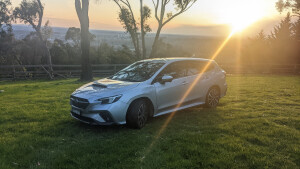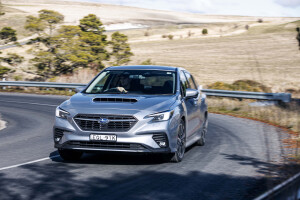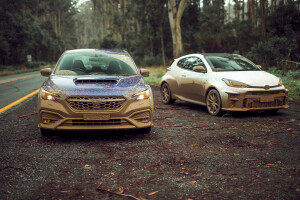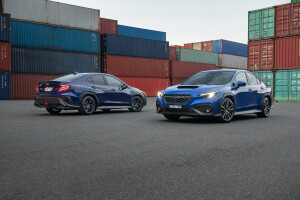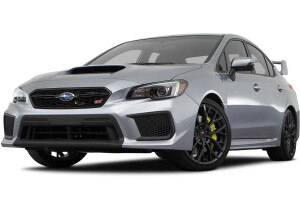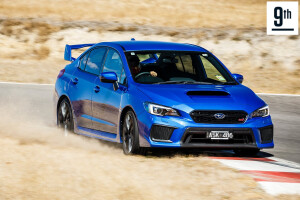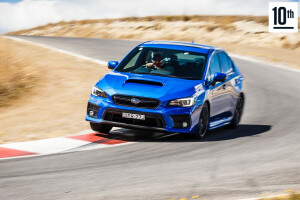Latest Review

Living with the new Subaru WRX Sportswagon tS: Long-term test
The Levorg is dead, long live the Subaru WRX Sportswagon – and any wagon brave enough to compete in our SUV-mad market. We're spending a few months with the new Subie to see if it's right for fun and family life alike
2022 Subaru WRX Sportswagon tS long-term review
JUMP AHEAD
- Welcome
- Update 1: On the road
- Upcoming: Comfort, space and quality
- Upcoming: Technology
- Upcoming: That's a wrap!
Welcome
- Price as tested: $57,990 before on-road costs
- This month: 221km @ 10.4 L/100km ( 3984km on odometer)
- Total: As above
Finally, they fixed it.
You know the bit I mean. The chrome window trim of the previous Subaru Levorg, the way it ran along the window sills and stopped abruptly at the rear quarter windows? Ridiculous.
Okay, yes, this is probably the last factor anybody would or should consider when buying a new car – nothing’s perfect, after all – but the thing is, the Levorg was imperfect in too many ways.
The interior was fussy and too busy, infotainment was spread across three poorly conceived displays, the CVT transmission performed a desperate and unconvincing impression of a torque converter, the suspension was wildly under-damped, and… well, this isn’t a review of the 2017 Levorg.
Here we’ve got the new one, still sold overseas as the Levorg, but smartly renamed WRX Sportswagon for Australia.
It’s sharp and stylish in a way previous generations of WRX have never been (the Seinfeld quote, “a loathsome, offensive brute, yet I can’t look away” comes to mind) and it is without question a more cohesive, mainstream-friendly offering than the generation before it.
We’re in first impressions mode here, though, so let’s look at what the new WRX Sportswagon tS is packing.
The complete WRX range opens at $44,990 before on-road costs, getting you the base sedan with a manual transmission.
Our tester, the WRX tS Sportwagon, sits at the top of the tree with a price tag of $57,990 – again before on-roads.
As with the WRX sedan, power in the Sportswagon tS is provided by a 2.4-litre turbo petrol four-cylinder engine, delivering 202kW and 350Nm.
Unlike the sedan, the wagon offers no manual option – to our eternal disappointment – and power is sent to its all-wheel drive system through a ‘Sport Lineartronic’ CVT automatic transmission with eight simulated ‘gears’.
You’ll never see an STI version of the new WRX, either, so those specs are about as good as it’s getting. In fact, Subaru is so over the notion of the WRX being a champ of the small performance car set that it doesn’t even list an official 0-100km/h time. We reckon it’ll run about six seconds – which the previous WRX did officially claim – but we’ll have to test that in the coming weeks.
Fuel use is listed at 8.5L/100km on the combined cycle, breaking down to 11.2L/100km in urban driving and 7.0L/100km on the highway. So far, I’m running at about 10.4/100km with an urban drive most days of the week (the school runs and shopping) and a few 20-minute sprints down Melbourne’s Eastlink to our Mulgrave office.
The new Levorg WRX Sportswagon is 20mm longer in the wheelbase than the previous wagon, and it’s about 15mm taller. Neither figure is impressive on paper, but overall packaging improvements means there’s a little more rear legroom and another five litres of boot space.
Interior style and tech improves on the old model by a good margin, introducing a more modern design through the cabin, while upgrading infotainment and controls to a huge new portrait screen in the dash.
The instrument cluster remains a conventional analogue unit with a colour ‘multi-function display’ between the dials; some may commend this resistance to digitisation, while others might suggest it reeks of behind-the-times, low-budget product development. Each to their own.
All models get that big 11.6-inch main display, along with wired Apple CarPlay and Android Auto.
Equipment highlights in all WRX wagon models include LED headlights, dual-zone climate control, rain-sensing wipers, reclining and power-folding rear seats, and adaptive cruise control.
The WRX GT adds a powered sunroof, powered tailgate, sat-nav, 10-speaker Harman Kardon audio, ‘Ultrasuede’ seat trim, eight-way powered front seats with memory, and driver monitoring.
Our top-shelf tS ups the sporting credentials, adding a drive mode selector with Sport and Sport+ in the mix, along with adaptive dampers and 18-inch alloy wheels with a design unique to the wagon.
Like some other model lines, particularly Hyundai’s i30 N-Line, the manual versions of the WRX miss out on the best of Subaru’s safety technology. Go for a manual sedan, and the active safety kit is limited to blind-spot monitoring, rear-cross traffic alert and tyre pressure monitoring.
Choose an automatic – which in the case of the wagon is your only choice anyway – and you get autonomous emergency braking, lane-keep assist, lane centring assist, emergency braking assist, traffic sign recognition and an intelligent speed limiter.
Lastly, and unlike the first year of Levorgs sold in Australia, the new WRX benefits from Subaru’s five-year / unlimited-kilometre warranty launched in 2019. Before that, it was a mere three years and 100,000km.
In the weeks ahead, we’ll look at whether the new Levorg is just the thing for that vocal minority of buyers that can’t give up on the wagon dream (this writer included), or if you’d be better off with an SUV – or, perhaps, the similarly priced Skoda Octavia RS wagon.
Things we like so far
- Sharp new looks
- CVT is better behaved and more capable than before
- Good power, really feels like a rapid thing
Not so much...
- Outdated, unintuitive infotainment UX
- Unlocking the rear doors via fob can be a pain
- The rally-heritage manual handbrake is gone!
On the road: I didn’t expect to love it, but…
- This month: 327km @ 10.2 L/100km (4311km on odometer)
- Total: 548km
There are plenty of ways to get fans of affordable performance cars all riled up, but there’s one sure-fire method that Subaru just can’t quit: packaging a continuously variable automatic transmission (CVT) with its now legendary WRX.
This WRX isn’t blessed with an STI badge – indeed, no second-gen WRX will ever be – but it’s still sold as a sports car, and it still packs a formidable 202kW, 350Nm turbocharged four-cylinder boxer engine.
Buyers of the new WRX sedan can opt for a six-speed manual – which most drivers do, if barely, with the sales split currently hovering around 55/45 in the manual’s favour – but in the wagon, it’s the CVT only.
So, really, the sales figures – small as they are in terms of the overall market – suggest it’s working out just fine. Certainly well enough that developing or sourcing a conventional auto, or a dual-clutch system, wouldn’t be worth the risk of the investment not paying off in sales volume.
Ask any wagon obsessive, though, and the CVT path is a move with only one sure outcome: eventually the wagon gets pulled from the market, and the brand points to the lack of interest in making this regrettable decision. (This despite us now being blessed with two generations of Levorg/WRX wagon.)
If the wagon ends up dropped, was it ever truly set up for success? That’s hard to answer, and when it comes to affordable sports wagons with manual shifters, there isn’t a lot of precedent in modern times. Subaru offered a shorty wagon version of the WRX in the past, but it certainly wasn’t the most popular shape in the range.
There were also sports-focused versions of the Liberty wagon – which this new, almost mid-sized WRX Sportswagon ostensibly replaces – but those, too, didn’t sell in big (enough) numbers.
There’s another reason the WRX wagon is auto-only: in every other market it’s sold, it once again wears the Levorg badge of its predecessor – and that’s an easier name to market as a sporty, ‘WRX-powered but not a WRX’, wagon.
And… breathe.
You’re now set up for me to give the WRX Sportswagon a proper lambasting, but… well, the thing is – and I risk making a pariah of myself among enthusiasts – it’s a genuinely fun car to drive. Not thrilling, not a weekend racer and definitely not a future icon. Just fun, and anybody buying this car has already decided that’s plenty.
Those that do make the leap will find that while this wagon doesn’t really live up to what experienced WRX-Men expect from the badge, it’s a compelling and tightly tuned family hauler.
Even discounting the CVT, it’s easy to understand where it falls apart for diehards. For one, there’s no limited-slip differential or rear diff disconnect – with Subaru opting for its electronic ‘Variable Torque Distribution’ system on the automatics – nor a manual handbrake, wiping out any opportunity for handbrake turns.
But, far out, who’s really talking about doing handbrake turns in a family wagon, fast or otherwise?
Indeed, it’s better to think of this as a lower, more compact and tighter-handling Outback (being all that’s left of the Liberty legacy).
What the WRX Sportswagon does have, if not in spades, is power. My street empties out at the bottom of a very big hill on a very big highway, and if there’s one thing I’ve come to love, it’s ripping out and up the hill just ahead of a fresh green light for the cross traffic (about 100 metres further down the hill).
It’s childish, but it’s also intoxicating – and that’s what Subaru wants buyers to feel with this car.
I’d even argue, if not with great conviction, that under most circumstances this CVT actually hooks up faster than the average dual-clutch auto – most of them being too easily confused by sudden demands for power. The WRX’s CVT will drone as they all do at certain points in the rev range, but its simulated gears are generally effective and stomping on the pedal will wake it up fairly quickly.
That it also happens to boast beautifully tuned adaptive dampers and surprisingly grippy eco-focused Yokohama Bluearth GT tyres to handle some spirited family hauling (“dad I feel sick”), well, that’s just a bonus.
And as Dan Gardner noted in his launch review, switching to the WRX sedan’s Dunlop Sport Maxx rubber would only improve an already competent package.
Fuel use may prove a sticking point, however. Subaru claims a combined-cycle figure of 8.5L/100km on its factory rubber, which is already a bit high for a modern family car – even a performance variant – but I’ve struggled to get it below 10L/100km.
In Subaru’s defence, much of my driving has been urban, which the WRX Sportswagon tS lists at 11.2L/100km – so it’s really not been too bad. But, with a minimum of 95RON required and fuel prices being what they are, you’ll want to consider keeping those “I drive a WRX” urges under control.
In some ways, it’s a shame Subaru slapped on the WRX badge instead of marketing this as a massively improved Levorg. There’s a psychological barrier here for enthusiasts who might’ve happily bought a second-gen Levorg, but, for those who don’t care about such things, this new Levorg WRX is worth a drive.
Things we like so far
- Plenty of power for a family hauler
- CVT surprisingly engaging when pushed
- Excellent adaptive dampers and overall ride quality
- Surprising grip from eco tyres
Not so much...
- CVT still ‘stretches’ and drones like any other CVT
- All of the engine and exhaust character, just gone
- Fuel use high, but not beyond claimed numbers
Up next: The interior of the WRX tS Sportwagon
News
-
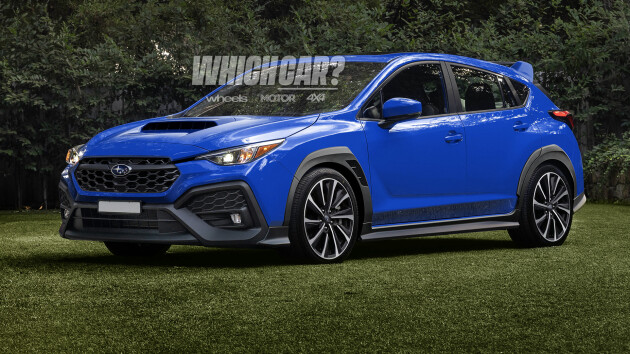 News
News2023 Subaru WRX hatch imagined! Better than Sportswagon?
Remember when the world went mad about the Impreza hatch? What are your thoughts now...
-
 Features
FeaturesFlashback: Damien Lowe's VB Commodore
Driven to Summernats in 2008 where it won Best Overall Street and driven home, Damien 'Chubby' Lowe's VB Commodore is a true street-driven show car
-
 News
NewsSubaru recalls nearly 80,000 vehicles in Australia
The brand has issued a recall for 78,617 examples of the Impreza, XV, Liberty, Outback, WRX and Levorg due to a manufacturing issue
-
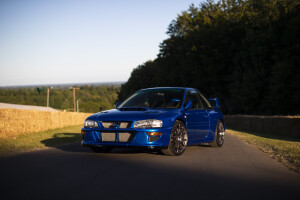 News
NewsProdrive P25 sells out at $800,000 each
The most iconic version of Subaru's Impreza WRX is being celebrated 25 years on with the use of modern tech and materials
-
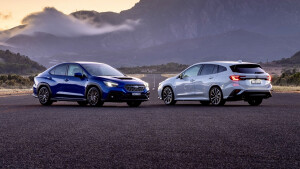
2022 Subaru WRX pricing and features
-
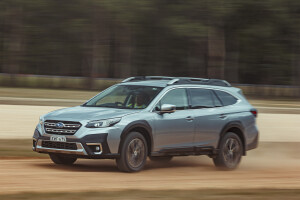
2022 Subaru Impreza, XV and Outback hit with $800 price hike
-
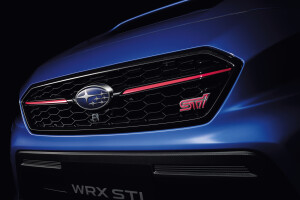
GOODBYE STI: Subaru announces high-performance nameplate won't return on new WRX
-

2022 Subaru WRX STI 22B: Two-door hero imagined


